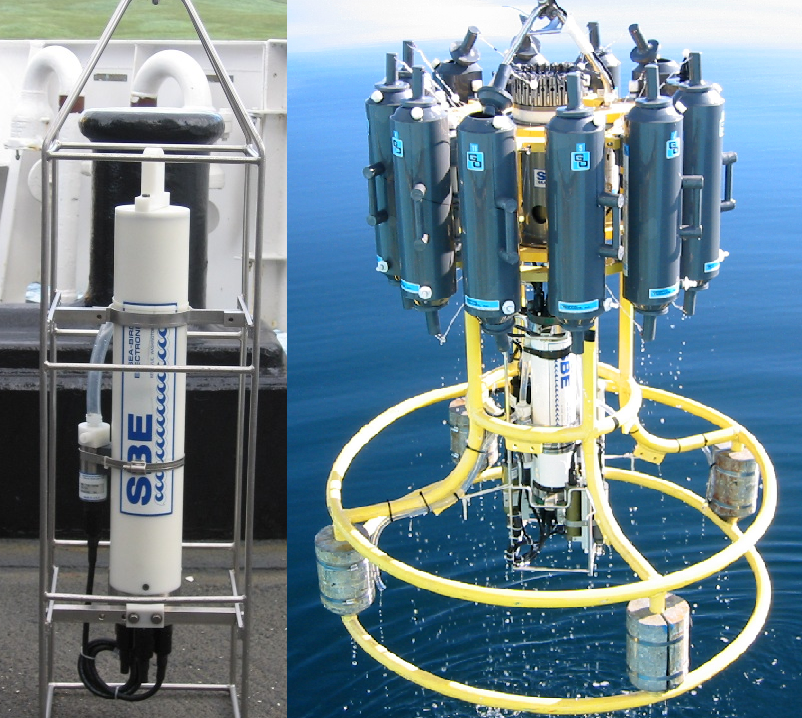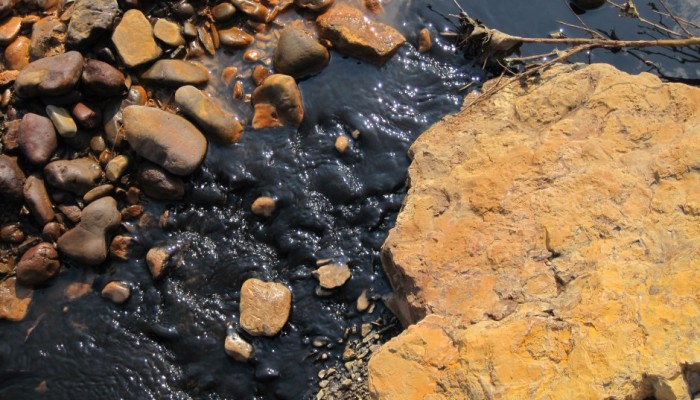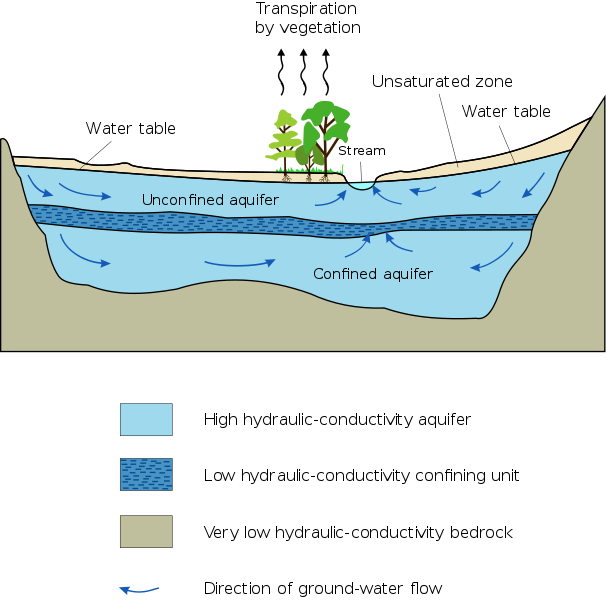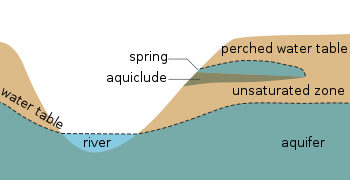
Cherrenekoff radiation is a pretty way to demonstrate radiation. (Photo: Matt Herod)
I am very excited to be hosting the 60th Accretionary Wedge at GeoSphere! Sorry my own contribution is so slow in coming…it has been a busy month PhD wise. In fact, I expect it will be a busy year PhD wise since I am hoping to submit in the Fall of 2014 and I have got a LOT of writing to do. Anyway, in the call for posts I said:
For this wedge the topic will be momentous discoveries in geology or its sub-disciplines that you feel have altered or shaped our understanding of how the Earth works, or opened new doors into research that had never been considered before. The discovery you choose does not have to be universally recognized as momentous but should be in your opinion. It could be something that we take for granted every day, but is in actuality part of the underpinnings of our science.
The discovery I am going to discuss is one that a wide variety of different geoscience disciplines uses every day and one that is particularly near and dear to my heart, since my PhD. is about an application of this discovery: radioactivity and radioactive isotopes. The consequences of the discovery of radioactivity have been extremely far reaching in many fields, particularly the geosciences. For this post I am not going to describe what radioactivity is, but rather some of the fantastic applications and subsequent discoveries that have hinged on the initial discovery of radioactivity and radioactive elements. There are a lot, so for the ones I don’t talk about I’d love to see comments on.

Cherenkov radiation is a pretty way to demonstrate radioactivity. (Photo: Matt Herod)
The Earth is constantly in a state of change. The process that move and shape the Earth are doing so in front of our very eyes. If only we had a means to see it happen….oh wait. Radioactive isotopes can often be used as tracers of natural processes. Sometimes the isotopes are naturally occurring and sometimes they are added through human activities. Either way, we can use them to uncover Earth’s mysteries.
The first thing that everyone thinks about when discussing application of radioisotopes in geology is radioactive dating. The basic principle of radioactive dating was discovered by Ernest Rutherford in 1905 and states that if we know the half life and the concentration of the decay product we can use that information to calculate how much of the parent isotope there was and then how old the material the daughter product was measured in is. This basic idea has spawned a wide variety of dating techniques using different isotopes with a range of half lives from very short to very, very long. Radioactive dating is the reason we know old the Earth is, when the dinosaurs lived and died, when ancient volcanoes erupted, what sort of tectonics took place on the early Earth, how long ago our ancestors lived and so much more. The problems to which radioactive dating can be applied are limited by the presence of a usable isotope rather than running out of questions. Indeed, there will always be more things to date using the wide varity of isotopes available. It is possible to date recent things using Carbon 14 or Tritium (Hydrogen), which both have fairly short half lives. The furthest back that I have seen dating methods go is for rocks from the Isua Greenstone belt, which were dated at 4.28 billion years using the samarium-neodymium isotope system (Note: This work was done by J. O’Neil a new prof at uOttawa). Either way, if it is new or old radioisotopes can date it.
Occasionally pollution can be useful. It goes without saying that pollution is bad. However, on occasion its presence can be used to solve scientific problems when nature does not provide a means to do so. One instance of this is using radioactive releases from nuclear fuel reprocessing to trace ocean currents in the North Atlantic ocean. The releases themselves are extremely low level, and are not dangerous to humans or the ecosystem in any way. However, they are easily detectable and therefore can be used. Fuel reprocessing releases a lot of iodine-129 and cesium-137, as well as some other isotopes. These isotopes are then released into the Atlantic ocean and circulate with currents. Using these isotopes to trace the depth profile of currents, where they move and how long it takes for them to circulate is a burgeoning field in oceanography research.
Not all radiotracers are pollution though. Ideally, we can use naturally produced radiotracers to tell us about the environment. For example, contaminated places aside, radon is produced by the decay of naturally occurring uranium-238. It can then be incorporated into groundwater or pass through the soil as a gas. One immediately obvious use of radon is in uranium exploration. If there is a higher concentration of uranium in the rocks more radon will be produced. Therefore, if soil gas sampling for uranium exploration finds elevated radon that could be an indication of a possible economic uranium enrichment. Another way of using radon is something that I have some personal experience with: tracing groundwater discharge into surface water. When groundwater comes in contact with uranium minerals it dissolves some of them or dissolves the radon gas directly. If this groundwater then discharges into a lake or a river for example we might expect to find higher radon at the discharge point. I did a lot of sampling for this one summer during my undergrad and we did find a few places where the radon concentrations were higher than background, which is an indication of groundwater discharge. We also canoed down an entire river with the instrument dangling out the side, sampling as we went. No radon was found in that instance, but it was really fun.
Radioactivity is also useful in the lab. In fact, I use the radioisotope iodine-125 almost every day as a tracer of a lab method I have been developing for the extraction of iodine-129 and 127 from organic materials. The process that I am using to extract iodine is combustion under a pure oxygen atmosphere and then trapping the iodine in a bubbler containing a hydroxide solution. However, it is often difficult to know if the extraction has been successful or not, particularly if I am playing with flow rates or temperature settings. The sample may be burnt, but did I capture the iodine? In order to test whether or not my combustion has been successful I add some iodine-125 to the sample before it is combusted. Then all I have to do at the end is see if my 125I, which is tested via gamma counting, is in my trap solution and I know if I got the other isotopes as well, because they all behave the same chemically. This line can also be used to extract other radiohalides from organic materials. In fact, as I type this a visitor from the Lamont-Doherty Earth Observatory is extracting chlorine-36 from vegetation and rat poop.

My iodine combustion line. The paper describing the work done on this will be submitted very soon! (Photo: Matt Herod)
Cosmogenic isotopes are one of the most useful tools in the surficial geochemists arsenal and their use is very wide ranging. I wrote a very long post about cosmic rays and cosmogenic isotopes previously. See here. The big uses that I discussed for cosmogenics, which are radioisotopes that are produced when cosmic rays collide with particles in the atmosphere or directly with minerals to produce other isotopes that can then be used for a wide range of dating applications.
Exposure age dating is one of the principle uses of cosmogenic isotopes and several different ones have been employed to this end. Exposure age dating is when we use cosmogenic isotopes to date how long something has been exposed to secondary cosmic rays at the Earth’s surface. For example, a rock at the toe of a glacier may have just been exposed to cosmic rays a year ago and its exposure age date will tell us this. Another rock, 20 metres further from the glacier toe may have been exposed 5 years ago and this difference will be recorded. Basically, the clock starts ticking once cosmic rays are able to reach the rock or bone, or whatever material is being dated.
Carbon 14 is unquestionably the most used of any of the cosmogenic isotopes. 14C is produced primarily when neutrons collide with nitrogen in the atmosphere replacing a proton in the nitrogen nucleus and transforming it into carbon-14, although atmospheric nuclear weapons testing also produced a substantial amount of 14C. The primary use of 14C, or radiocarbon, is radiocarbon dating. Once radiocarbon is produced it enters the global carbon cycle and disperses throughout the environment. Since it is part of the carbon cycle it becomes incorporated into all living things, including people and animals. 14C continues to enter our bodies while we are alive. Once we die, there is no further addition of 14C and therefore, the clock starts ticking on its use as a dating tool. 14C has a 5,730 year half life and is therefore useful as a dating tool for biological materials up to ~45,000 years ago.
Sick of reading about how useful radioactivity is in geology? I don’t blame you. However, what I have presented here is just the tip of a very large iceberg. Other examples, include helium-tritium dating, helium ratios, tritium in natural systems, gamma logs for oil and gas exploration, and much, much more. It is all thanks to that very momentous discovery in 1896 by Henri Becquerel. If you have examples of the use of radioisotopes or radioactivity in geology please comment about it below.
The summary post for September’s AW will be up in a few days. So if you have a late submission you can still get it in.
Matt



















